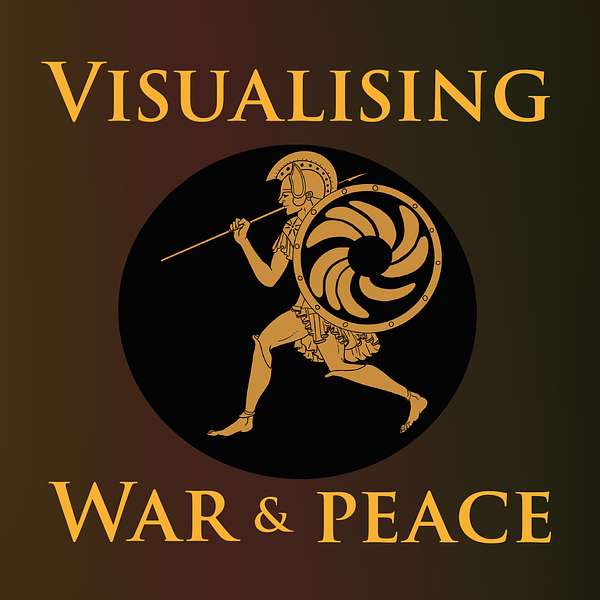
Visualising War and Peace
How do war stories work? And what do they do to us? Join University of St Andrews historian Alice König and colleagues as they explore how war and peace get presented in art, text, film and music. With the help of expert guests, they unpick conflict stories from all sorts of different periods and places. And they ask how the tales we tell and the pictures we paint of peace and war influence us as individuals and shape the societies we live in.
Visualising War and Peace
Reading Trajan's Column with Jon Coulston
In this week's episode, Alice and Nicolas interview Roman historian Dr Jon Coulston. Jon is an expert on Roman military culture and ancient representations of war. He gives us a fascinating introduction to one of the most detailed and influential military monuments to survive from the Roman Empire: Trajan's column. Commemorating the emperor Trajan's victory over King Decebalus of Dacia in 106 AD, the column narrates the story of two historic campaigns, giving us valuable insights into real-life events and Roman military practice. Its depiction of the Dacian Wars is not purely historical, however; the sculptors who carved it drew on long-established traditions of representing warfare and created scenes that conformed to shared ideals and expectations of how war should be conducted and victory achieved. As we discuss, Trajan's column offers fascinating insights into Roman habits of visualising war. Jon also talks about the influence it has had on later habits of representing victory, imagining good generalship and conducting campaigns.
Among other questions, we asked Jon:
- how accurately does Trajan's column represent the Dacian Wars?
- what earlier representations of war influenced the carvings on the column?
- whose vision of war do we see depicted on it?
- who was the column meant to impress?
- what impact did Trajan's column have at the time, and what influence has it had since on how people imagine, understand and even prosecute military campaigns?
- what can Trajan's column tell us about Roman and later habits of visualising war?
We hope you enjoy the episode!
For a version of our podcast with close captions, please use this link. If you would like to see the images discussed in this podcast, you can find bonus material on our project blog. You can also find out more about Trajan's column on Jon's website.
For more information about individuals and their projects, access to resources and more, please have a look on the University of St Andrews Visualising War website.
Music composed by Jonathan Young
Sound mixing by Zofia Guertin